
The today's flag of Macau was already unofficially introduced before the handing over to China and was already at that time very popular in the population. It shows a white lotus flower on a green background, with a stylised bridge below and an arch of five golden, five-pointed stars above. The colours of the flag are given as follows, hexadecimal: Green = #067662, which would correspond to Pantone 335, Yellow = #FFDF1E, which would correspond to Pantone 108. In the times of the Portugese colony was solely in use the Portugese national flag because they saw the colonies as permanent component of the motherland and not as outer possessions. This implys that Portugese colonies never had own flags, even if there were ambitions in the sixties of the 20th century to introduce flags for the colonies by placing of the coat of arms of the colony in the flying end of the Portugese national flag. But this plans became never realized.
Source:
Wikipedia (DE),
Wikipedia (EN)

Location:
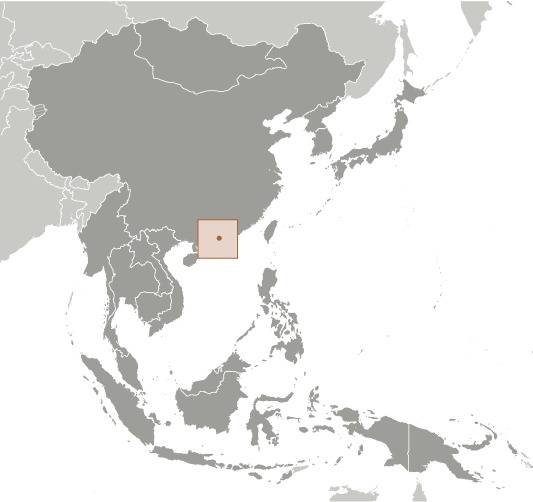
Source: CIA World Factbook
Map of the country:
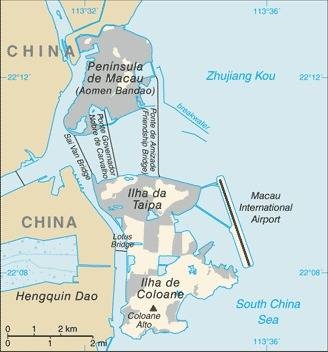
Source: CIA World Factbook

Area: 12 square miles, thereof Macao Peninsula 2,3 sq.mi., Taipa Island 1,5 sq.mi., Coloane Island 2,7 sq.mi.
Inhabitants: 646.800 (2015), thereof 89% Chinese, 1% Portugese
Religions: 80% Buddhist, 4% Roman Catholic, 1% Protestant
Density of Population: 55.840 inh./sq.mi.
official Languagen: Chinese, Portugese
other Languages: English
Currency: 1 Pataca (MOP, Pat.) = 100 Avos
Time Zone: GMT + 8 h
Source:
Wikipedia (DE)

1513 · the Portugese seafarer Jorge Álvares reaches the islands of Macau
1557 · Portugal leases the Macau Peninsula from China
1849 · Portugal occupys the islands Taipa and Coloane and declares Macau to a Portugese territory, the leasing contract expires
1887 · China recognizes Macau as Portugese colony
1941 · Japan occupies Macau
1945 · the Japanese troops in Macau surrender
1951 · Macau becomes a Portugese Overseas Province
1974 · Portugal wants to give back Macau to China, China rejects
1976 · new status for Macau: "autonomous Chinese territory under Portugese administration"
1987 · treaty between Portugal and China about the return of Macau on the 20th of December in 1999
20th of December · Portugal hands over Macau to China, Macau becomes a Special Chinese Administration Region (SAR)
Source:
Wikipedia (D),
Discovery '97

The term "Macau" descends actually from the Chinese language. Initially the Bay of Macau was named "A-Ma Gao" what means "Bay of the Goddess A-Ma" out of which the Portugese in the 16th century made "Macau". Sometimes was also in use the term "Macao". The today's Chinese name "Aomen" has nothing to do with this anymore. "Aomen" means "Gate to the Bay".
Source:
Handbuch der geographischen Namen


![]()

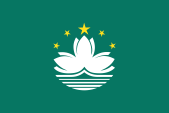


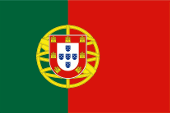

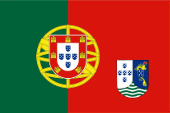
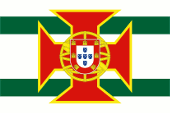

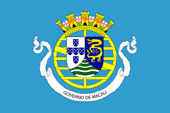
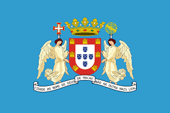


![]()
